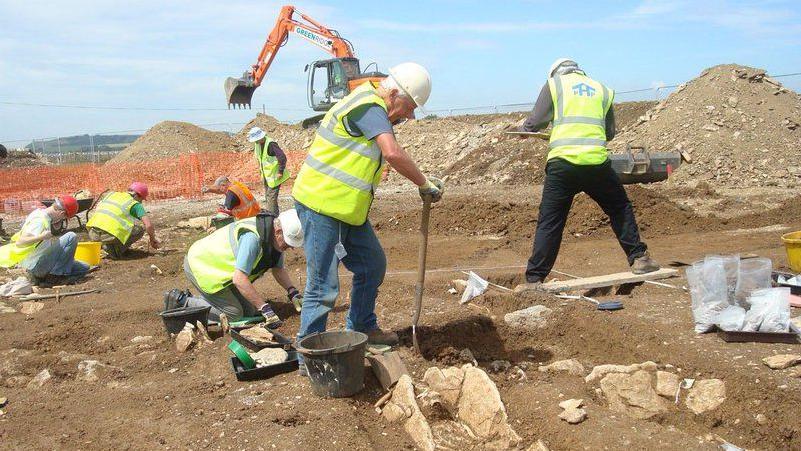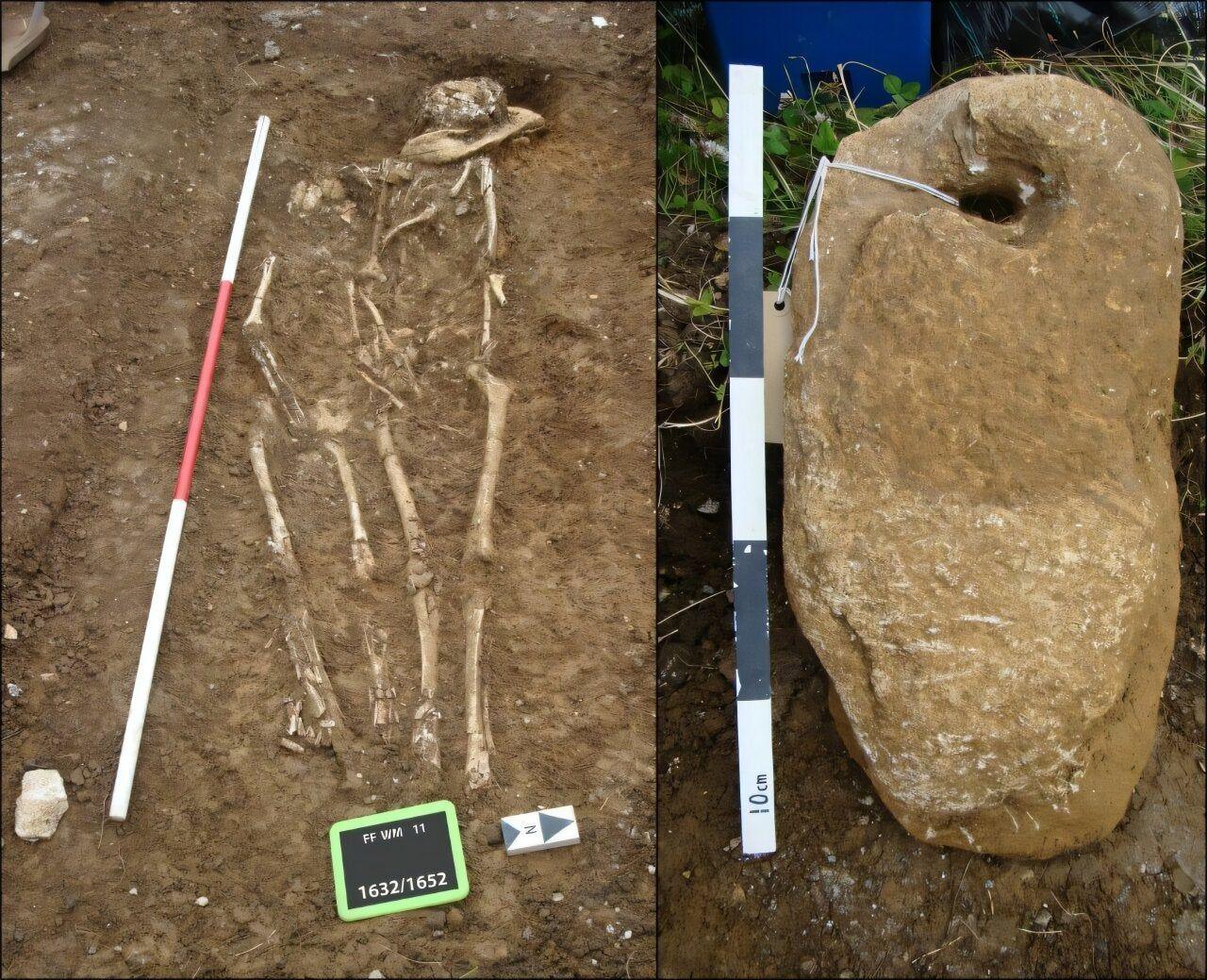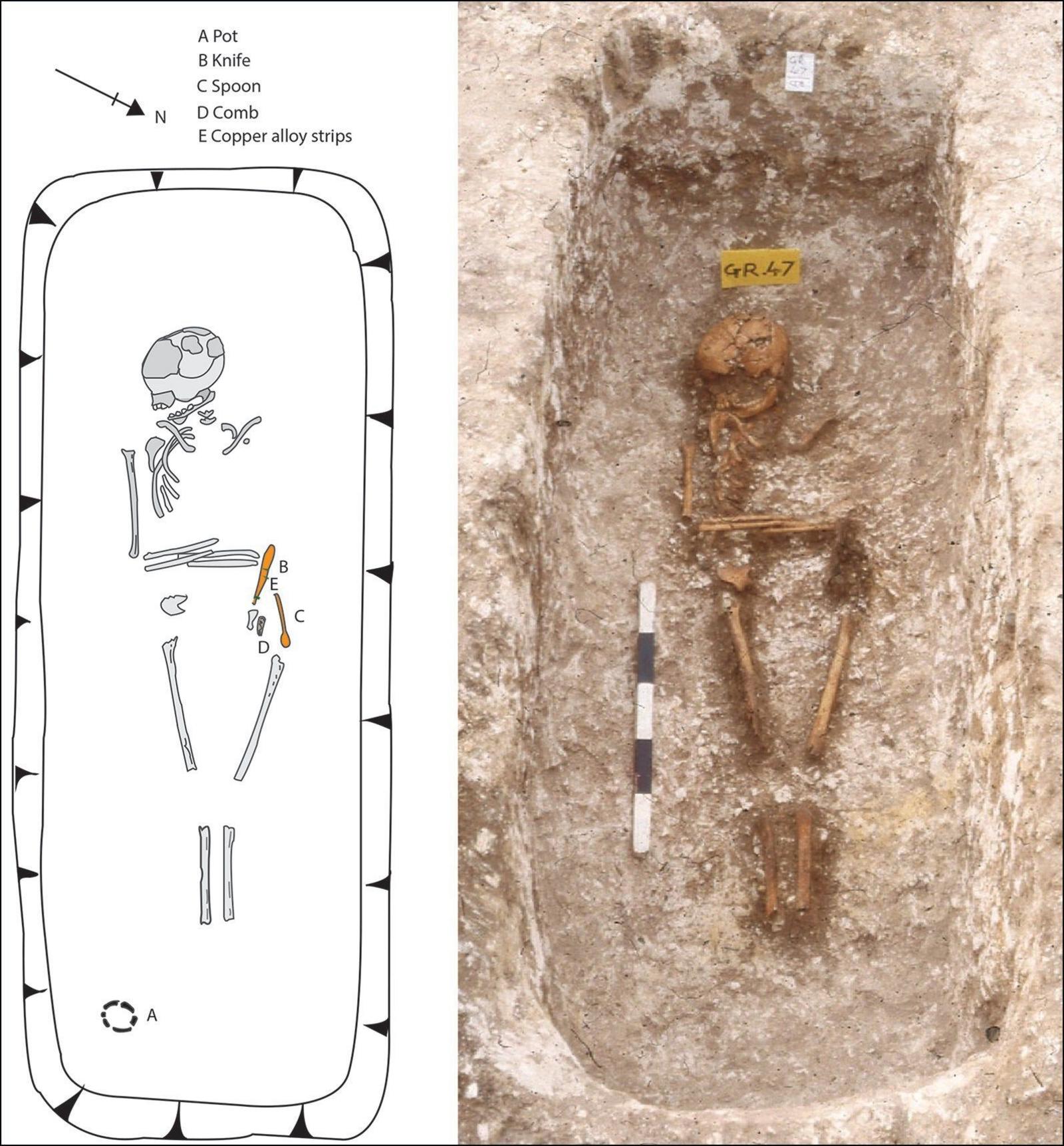Archaeological dig finds medieval children in England with African grandparents

Archaeologists found the skeletons in Dorset and Kent, on the south coast of England.
- Published
A boy and girl who lived in medieval England likely had grandparents from Africa, according to new findings by archaeologists.
The DNA from the skeletons - which are over a thousand years old - was tested by scientists to reveal their ancestry.
The boy was found in a medieval cemetery in Dorset, and the girl was found at cemetery in Kent.
The archaeologists said they were surprised to find early medieval skeletons with grandparents from so far away.
More stories like this
- Published31 July 2023
- Published23 April
- Published17 October 2024
What did the scientists find?

The boy found in Dorset was buried with another male, along with an anchor made of limestone (right).
The scientists originally tested the DNA of 23 bodies that were found in a medieval cemetery.
When they studied their DNA most of the skeletons buried there had either northern European or western British and Irish ancestry.
But scientists were amazed to find that one person at each cemetery had a recent ancestor from west Africa.
In fact, the team found that between 20 to 40 percent of the ancestry in the skeletons was from sub-Saharan Africa.
They even revealed that the individuals had similar DNA to groups living in west Africa right now, such as the Yoruba, Mende, Mandenka and Esan groups.
'A diverse population'

The girl found in Kent was buried alongside a hair comb, a spoon, a knife, and a pot.
According to researchers, the findings suggest that medieval Britain may have been more diverse than once believed.
One of the researchers, Dr Edwards, said the results suggested "a diverse population with far-flung connections who were, nonetheless, fully integrated into the fabric of daily life."
Another of the team, Dr Sayer, said the finding was "fascinating" because the children were buried in very different places, but had such similar DNA.
